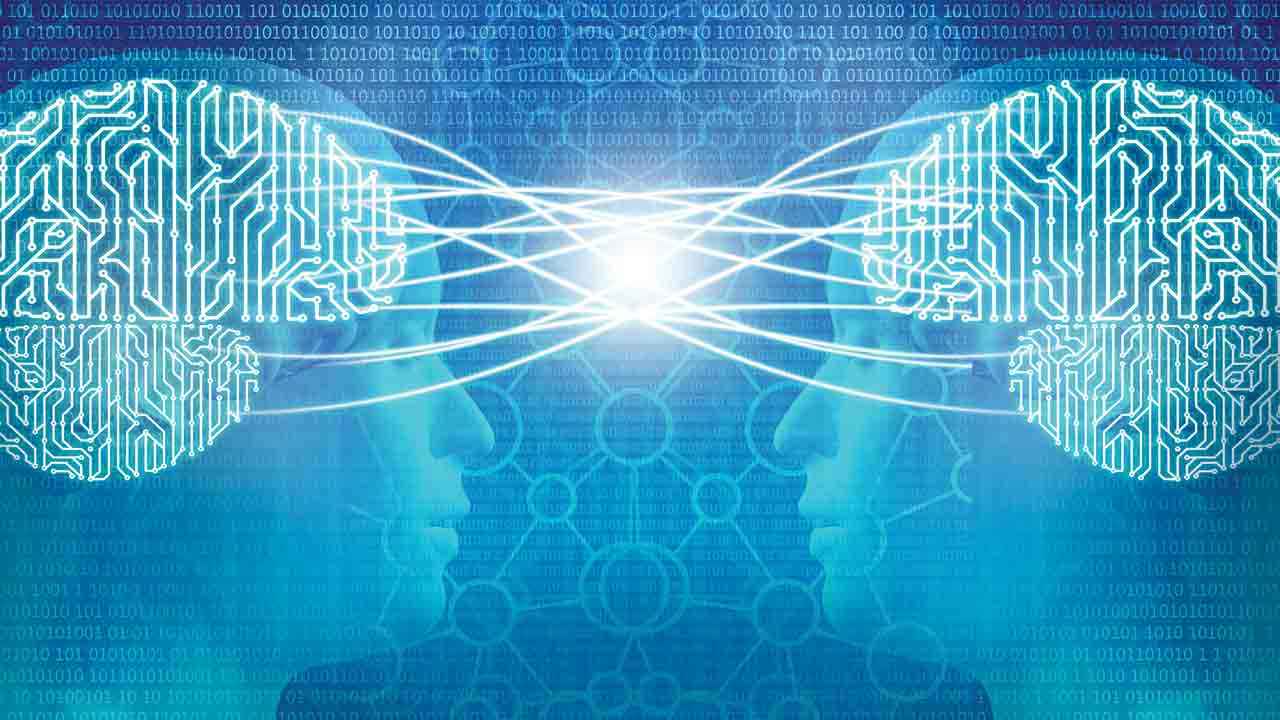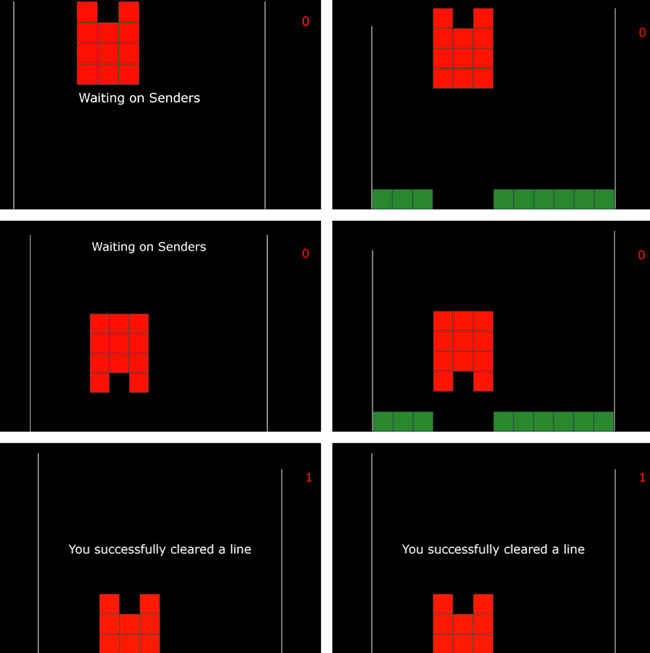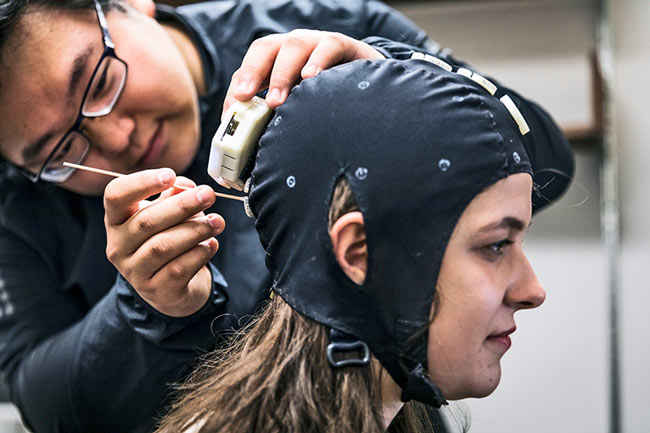BrainNet: Inching towards telepathy?

When you think about telepathy as a concept, it is likely to be in a science-fiction setting. However, this convoluted concept may actually have a chance to transcend into reality. In the past few years, physicists and neuroscientists have developed an arsenal of tools that can sense certain types of thoughts and transmit information about these thoughts into other brains. We are rapidly encroaching upon the possibility of brain-to-brain communication or telepathy becoming a reality. While we haven’t quite reached the levels of telepathy seen in sci-fi films and series, a group of neural engineers from the University of Washington have created a system that allows three people to collaboratively play a Tetris-like game by transmitting the ‘Sender’s’ thoughts to the ‘Receiver’. Curious? Let’s delve more into this system which the neural engineers have dubbed ‘BrainNet’.
 Survey
SurveyMaking the Connection
While BrainNet came into fruition recently, the theory of connecting humans minds was put to test in 2015 by Andrea Stocco from the University of Washington. Two people were connected to a prototype transmitter and receiver. The device which adorned the test subjects’ heads similar to a shower caps, but inside this headgear was a series of highly sensitive electrodes. The team achieved mostly positive results after the participants of the study played a game somewhat similar to 20-questions. BrainNet essentially builds on this contraption. A team led by Dr Rajesh Rao, a professor at the University of Washington, built BrainNet which borrows from Stocco’s work as well as Rao’s work back in 2014.
The Tech behind BrainNet
Senders can see the block and the line, but receivers can only see the block
The system, as seen in Stocco’s work, seemed to work with two people, so Rao went a step further and decided to incorporate yet another person in the process. In the new study, two people were dubbed ‘Senders’ and one person dubbed the ‘Receiver’ were made to play a game similar to Tetris. The senders can see both the block and the line but can’t control the game, while the receiver can only see the block but is the one that actually controls the game. Basically, each sender needs to decide whether they need to flip a block to complete a line (just like Tetris). The senders were hooked up to the EEG machine and by using real-time EEG analysis, the decisions of whether or not to move a piece were decoded and then sent to Receiver over the internet. Then, transcranial magnetic stimulation (TMS) was used to activate the corresponding areas in the receiver’s brains. The message received by the receiver is translated and signals are then sent to the occipital cortex of the game. When the information has been processed by the receiver, he sends a command of whether or not to rotate the block to complete the line.
Five groups of participants played 16 rounds of the game each. During this process, all three participants of a group were in different rooms altogether and couldn’t hear, see to speak to one another. Senders see the line and the block along with a prompt asking them if the block should be moved. One side of the screen says ‘YES’ while the other says ‘NO’. Beneath the ‘YES’ option, an LED flashes 17 times per second and beneath the ‘NO option, the LED flashes only 15 times a second. When the sender makes a decision, they are required to concentrate on the corresponding light. The EEG caps pick up the senders electrical activity, which is generated by the LED lights’ different flashing patterns, that trigger unique activity in the brain. The computer provides real-time feedback by displaying a cursor on the screen that moves towards each sender’s desired choice. These selections are then translated into a YES or a NO that is received by the ‘Receiver’. The team used a cable that ends with a wand and looks like a tiny racket to deliver the message to the receiver. This ‘coil’ is placed behind the receiver’s head and it stimulates the occipital cortex, as mentioned above, which is the part that translates signals from the eyes.
Linxing Preston, a part of the BrainNet team, sets up a ‘Sender’ for the experiment
Stocco said, “We essentially ‘trick’ the neurons in the back of the brain to spread around the message that they have received from the eyes. Then participants have the sensation that bright arcs or objects suddenly appear in front of their eyes”. Simply put, this means, if the answer is ‘Yes, rotate the block’, the receiver will see a bright flash. If the answer is ‘No’ then they see nothing. The Receiver also wears an EEG cap which allows him to tell the game his decision to rotate the block or not in the same way. The senders also got a chance to review the decision taken by the receiver and send corrections if needed. Once the receiver inputs the second and final decision, everyone in the group finds out if they managed to clear the line. After rigorously testing five groups of threes, the scientists found that this brain-to-brain interface could achieve an 81 per cent accuracy in the game, which means the teams cleared the game 13 out of 16 times on average.
‘Good’ and ‘Bad’ Teammates
The researchers also wanted to delve deeper into whether the Receiver would learn to trust one Sender over the other over time, based on their reliability. Therefore, the team purposely picked one Sender to be the ‘bad Sender’. No, they didn’t make the senders answer incorrectly but they just flipped the bad sender’s responses in 10 out of 16 trials. The study indicated that the receiver went from being relatively neutral about both senders to strongly preferring information received from one of them, the ‘good sender’. This ‘noise’ essentially allowed the team to observe how the Receiver processes the noisy signals in order to make the right decision. So, just like in conventional social networks, the receiver (like a consumer) would learn to trust the sender that provided more reliable information, essentially teasing out fake news in this brain-to-brain social network. Researchers hope that they can use these findings to improve cooperative problem-solving by using a sort of ‘social network’ of connected brains.
The Future of Communication?
Despite this brain-to-brain system only being able to communicate binary information (YES or NO), efforts are being undertaken to broaden the bandwidth by exploring the usage of functional MRI (fMRI) to read changes in brain activity better. As non-invasion neurotechnologies get better with time, BrainNet will get more sophisticated as well. However, the researchers in the BrainNet team believe that this is the right time to begin conversing about the ethics of this kind of brain augmentation research and start developing protocols to ensure privacy is respected as the technology continues to evolve and get better. The group has begun working with the Neuroethics team at the Centre for Neurotechnology. The led neuro-engineer, Rao, believes that BrainNet is just the beginning and they have a long way to ago since their equipment is still expensive and bulky, and the task is actually a game. While we are not close to telepathy as we know it from the world of Sci-Fi, this is certainly a step in the right direction. The pursuit of these kinds of brain-to-brain interfaces has the potential to open up new frontiers in human communication and collaboration, and also provide a deeper understanding of the human brain.
Dhriti Datta
Perpetually sporting a death stare, this one can be seen tinkering around with her smartphone which she holds more dear than life itself and stuffing her face with copious amounts of bacon. View Full Profile

